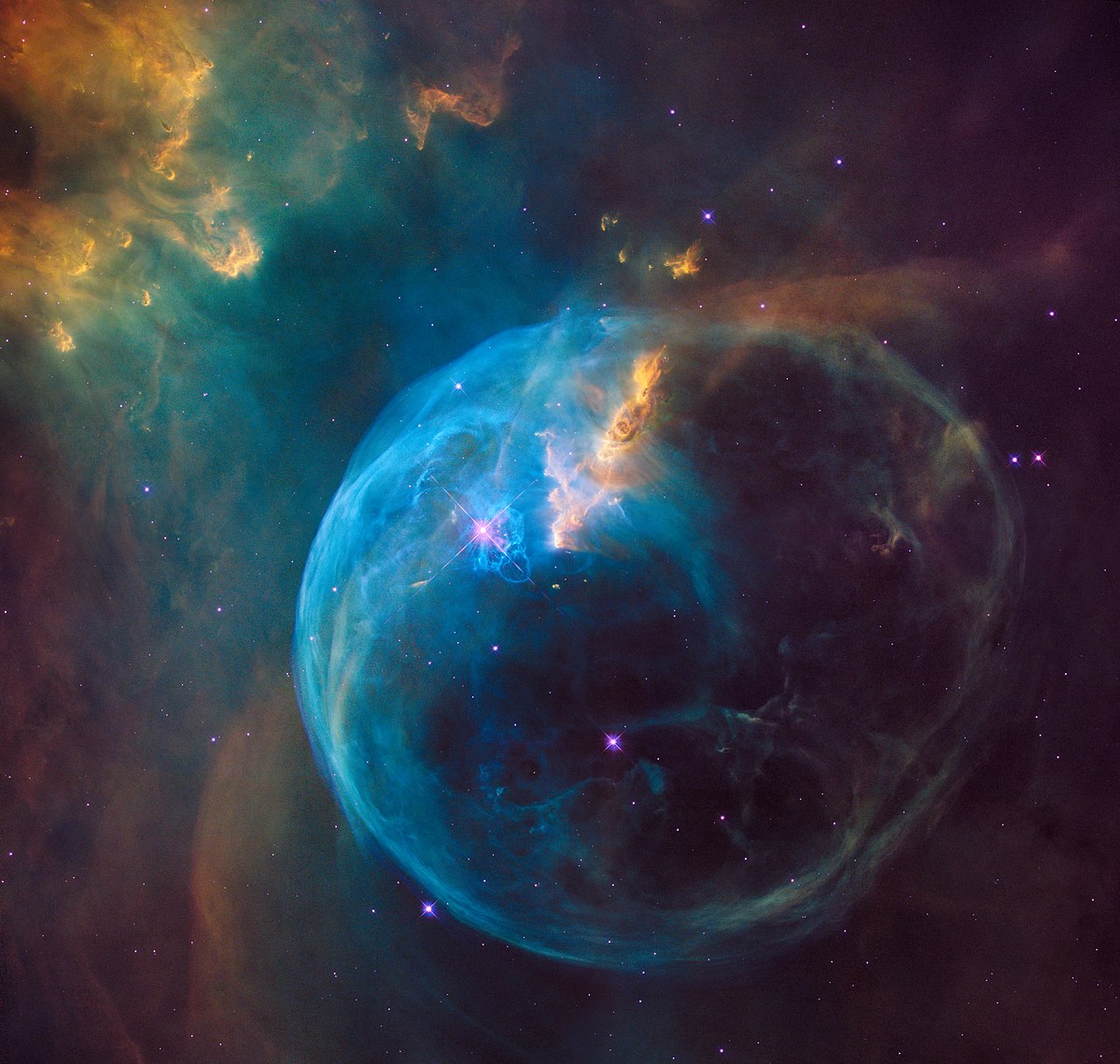Words by Tarryn Basden
Tarryn is just an evolutionary mass of atoms whose sole instinct is survival
Vacuum decay, the ‘ideal’ end of the Universe scenario.
There are more ‘end of universe’ theories than I’ve had hot dates. We have the catastrophic ‘Big Rip’, its opposite ‘Big Crunch’, and the chilling ‘Big Freeze’ (which happens to be Brian Cox’s favourite ‘end of universe’ flavour). Even an exploding TARDIS, opening a crack in time and space that threatens to erase everything throughout history¹. But no matter which flavour you go for; they are all guaranteed to ruin your day worse than truck stop coffee. Except for one: vacuum decay.
Vacuum decay is all-encompassing, unpredictable, extremely efficient², and happens at the speed of light. So totally not day-ruining because you don’t see it coming, can’t stop it, and won’t even know it’s happening. But don’t worry, we’re not just here to get depressed about the potential end of everything. We’re here to learn exactly how that end of everything might happen (so we can still get depressed but with all the facts).
So, what do we need to know about Vacuum Decay? First, I need to introduce you to the Higgs Field. The Higgs Field holds the quantum world together like a favourite pair of spanks. It’s what ’causes’ the laws of physics to work the way they do (you know, the way that sustains life).
Now, when we’re talking about the laws of physics, we really don’t want them to change (remember, life-sustaining). In order for them not to change, they need to exist in a vacuum state. This is science talk for having the least amount of energy possible. It means no energy can be removed, and nothing can change. Fortunately, scientists – in their infinite wisdom and experimentation – are pretty confident that everything quantum is in a true vacuum state except maybe one thing – the Higgs Field³. Turns out, there is a chance that the Higgs Field is not in a true vacuum state, but something called a false vacuum. This means that while it may not be changing, it’s not actually at its lowest possible energy state, it still has something to lose (which, in a hostage situation can be helpful, but in quantum mechanics, not so much).
So how can this ‘technically stable, but not really,’ situation happen? Imagine an abandoned teddy bear sitting on the floor – it can’t move or drop any further. It’s at its lowest possible state. It’s in a true vacuum. Now imagine that same fuzzy teddy bear nestled comfortably in a sun chair on a pedestal. It still can’t move, it’s not changing, but technically it does have somewhere to fall. It’s in a false vacuum. This is where some scientists believe the Higgs Field is, just chilling out, threatening the very existence of everything we know, like it’s no big deal. The good news is the amount of energy it would take to push the Higgs Field out of its comfy little chair is almost insurmountable. What is possible, however, is quantum tunnelling. Now, that’s a topic for another day, but all you need to know is that (quantumly speaking) sometimes things can randomly tunnel from one spot to another. Like, for example, from a chair on a pedestal to the floor.
So, what’s the big deal? What’s so bad about one of these little suckers going on a field trip to a true vacuum state? Well, if this were to happen it would create a bubble of messed up Higgs Field, where the laws of physics no longer apply, and everything breaks down. But it’s just one little bubble, right? Unfortunately, that one little bubble will expand, knocking the next teddy bear off its pedestal, and so on, and so forth, at the speed of light, changing the laws of physics and tearing apart everything it encounters until there is nothing left untouched 4. The resulting universe will have a completely new set of physics, which would very likely be unsuitable for life 5.
So, what have we learned? Essentially, vacuum decay is an ultimate, all-encompassing death bubble that could literally destroy the entire universe as we know it, at any moment.
Is it possible? Of course, it’s science.
Is it likely? Not particularly.
Should we be worried? In the sense that everything could be destroyed at any moment, sure, take it under advisement. Eat dessert first, text your crush, the world could end at any moment! But in the sense that we should plan for, or try to do something about it? Nope. We can’t see it coming, can’t stop it, and won’t even know it happened. So, live your life. Just in a slightly more informed way.
FOOTNOTES
1 Not an actual scientific theory. But it is an excellent Doctor Who episode.
2 Assuming, of course, the complete and utter destruction of everyone and everything that exists is your ultimate goal.
3 You remember, the thing that holds all the other things together and lets life happen?
4 Think Thanos, but on a much wider scale. Or Crisis on Infinite Earths, in the interest of Marvel/DC equality
5 Although there are theories that vacuum decay has already happened and we are currently living in the resulting universe

